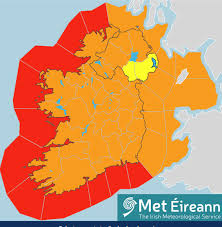Comparing the Faroe Islands and Montenegro: A Scenic Contrast

Introduction
The Faroe Islands and Montenegro are two remarkable yet distinct travel destinations, each offering unique landscapes, cultures, and histories. The Faroe Islands, a self-governing territory of Denmark, are known for their rugged coastlines and breathtaking natural beauty, while Montenegro, a small Balkan nation, boasts picturesque mountains and a stunning Adriatic coastline. Understanding the contrasts and similarities between these two places can provide valuable insights for potential travellers.
Geographical Features
The Faroe Islands are an archipelago situated in the North Atlantic, consisting of 18 islands, with rugged terrain, steep cliffs, and rich biodiversity. Its landscapes are characterised by lush green hills, dramatic waterfalls, and open sea views. On the other hand, Montenegro is renowned for its stunning mountainous landscapes, particularly in the north, alongside the picturesque beaches of the Adriatic Sea. The Bay of Kotor, with its historic towns and stunning fjord-like scenery, is one of Montenegro’s highlights.
Cultural Differences
Culturally, the Faroe Islands have deep-rooted traditions linked to their Viking heritage, which are reflected in their art, music, and festivals. The Faroese language, which has Scandinavian roots, and dishes like fermented lamb and fish showcase their cultural identity. In contrast, Montenegro’s culture is a rich tapestry influenced by Byzantine, Venetian, and Ottoman heritages. This diversity is celebrated in its architecture, cuisine, and vibrant festivals that reflect both Slavic and Mediterranean influences.
Tourism Insights
Tourism in the Faroe Islands is steadily growing, with visitors drawn to hiking trails, birdwatching, and stunning vistas. Popular sites include the historic village of Gjógv and the iconic Mulafossur Waterfall. However, infrastructure remains relatively modest, appealing to those seeking off-the-beaten-path adventures. Conversely, Montenegro has embraced mass tourism, particularly along the coast with resort towns like Budva and Herceg Novi. The country also offers a range of outdoor activities, including hiking, skiing, and water sports.
Conclusion
In conclusion, both the Faroe Islands and Montenegro provide spectacular scenery and rich cultural experiences, but they cater to different types of travellers. While the Faroe Islands attract those seeking unspoiled nature and solitude, Montenegro appeals to visitors looking for a blend of adventure and vibrant coastal life. As travel trends continue to evolve, both destinations are likely to grow in appeal, showcasing their unique qualities to an ever-widening audience.









